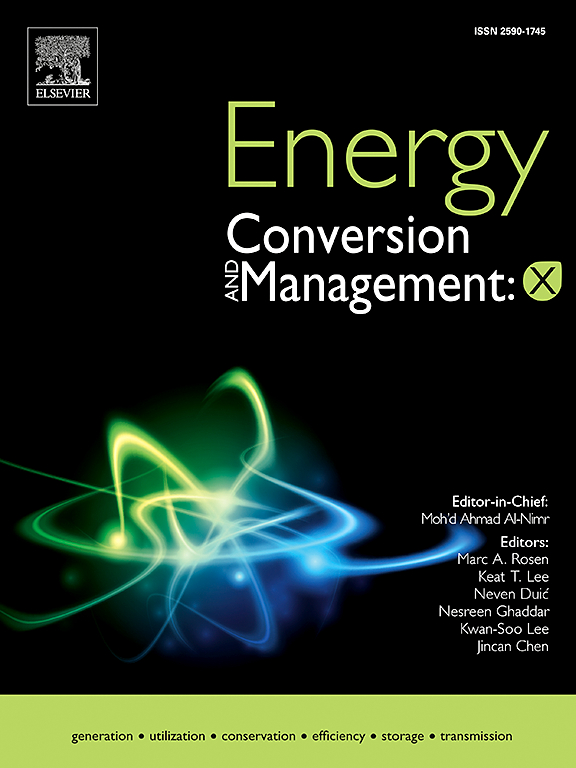Bioethanol as an alternative fuels: A review on production strategies and technique for analysis
IF 7.1
Q1 ENERGY & FUELS
引用次数: 0
Abstract
Bioethanol production represents an alternative source of energy that also helps minimize greenhouse gas effects. Currently, the focus of advanced technologies for bioethanol production is on the conversion of lignocellulosic biomass into renewable energy for transportation as it offers a low cost of investment and non-pollution bioprocesses. However, the utilization of lignocellulosic biomass has several challenges, including the high cost of pretreatment, the recalcitrant nature of the biomass and the requirement for robust microbes to ferment various types of sugars. Informations on the subject were achieved through a literature search using various electronic databases such as Google Scholar, ScienceDirect, Scopus, and others. From literature findings, few strategies such as separate hydrolysis and fermentation (SHF), simultaneous saccharification and fermentation (SSF), simultaneous saccharification and co-fermentation (SSCF), and consolidated bioprocessing (CBP); were found established to overcome these challenges, ultimately increasing the effectiveness of the bioconversion process and minimizing the overall cost of production. CBP was found to be the most promising strategy as direct production of ethanol from pretreated corn cob yielded 11.1 g/L ethanol without the addition of external hydrolytic catalyst. Various analytical techniques are commonly used to quantify bioethanol in a sample, and these methods were theoretically analyzed in relation to established theories. Currently, gas chromatography is known to be the most effective approach with limits of detection typically around 0.099 mg/mL, demonstrating excellent linearity and recovery rates between 91% and 109%. This paper aims to highlight the efficiency of every strategy involved in the bioconversion process and provide insights into every suitable analytical technique that can be employed to ensure the sustainability of biofuel by allowing researchers to improve the productivity and quality of bioethanol, thus promoting its role as a feasible alternative fuel.
生物乙醇作为替代燃料:生产策略和分析技术综述
生物乙醇生产是一种替代能源,也有助于减少温室气体的影响。目前,生物乙醇生产的先进技术的重点是将木质纤维素生物质转化为可再生能源用于运输,因为它提供了低成本的投资和无污染的生物过程。然而,木质纤维素生物质的利用面临着一些挑战,包括预处理的高成本、生物质的顽固性以及需要强大的微生物来发酵各种类型的糖。通过使用各种电子数据库(如b谷歌Scholar、ScienceDirect、Scopus等)进行文献检索,获得了有关该主题的信息。从文献资料来看,分离水解和发酵(SHF)、同时糖化和发酵(SSF)、同时糖化和共发酵(SSCF)和强化生物处理(CBP)等几种策略;我们发现建立克服这些挑战,最终提高生物转化过程的有效性,并最大限度地降低总体生产成本。CBP是最有前途的方法,因为在不添加外部水解催化剂的情况下,从预处理玉米芯直接生产乙醇的产量为11.1 g/L。各种分析技术通常用于定量样品中的生物乙醇,这些方法在理论上进行了分析。目前,已知气相色谱法是最有效的方法,检测限通常在0.099 mg/mL左右,具有良好的线性,回收率在91%至109%之间。本文旨在强调生物转化过程中涉及的每一种策略的效率,并提供每一种合适的分析技术的见解,这些技术可以通过让研究人员提高生物乙醇的生产率和质量来确保生物燃料的可持续性,从而促进其作为可行的替代燃料的作用。
本文章由计算机程序翻译,如有差异,请以英文原文为准。
求助全文
约1分钟内获得全文
求助全文
来源期刊

Energy Conversion and Management-X
Multiple-
CiteScore
8.80
自引率
3.20%
发文量
180
审稿时长
58 days
期刊介绍:
Energy Conversion and Management: X is the open access extension of the reputable journal Energy Conversion and Management, serving as a platform for interdisciplinary research on a wide array of critical energy subjects. The journal is dedicated to publishing original contributions and in-depth technical review articles that present groundbreaking research on topics spanning energy generation, utilization, conversion, storage, transmission, conservation, management, and sustainability.
The scope of Energy Conversion and Management: X encompasses various forms of energy, including mechanical, thermal, nuclear, chemical, electromagnetic, magnetic, and electric energy. It addresses all known energy resources, highlighting both conventional sources like fossil fuels and nuclear power, as well as renewable resources such as solar, biomass, hydro, wind, geothermal, and ocean energy.
 求助内容:
求助内容: 应助结果提醒方式:
应助结果提醒方式:


